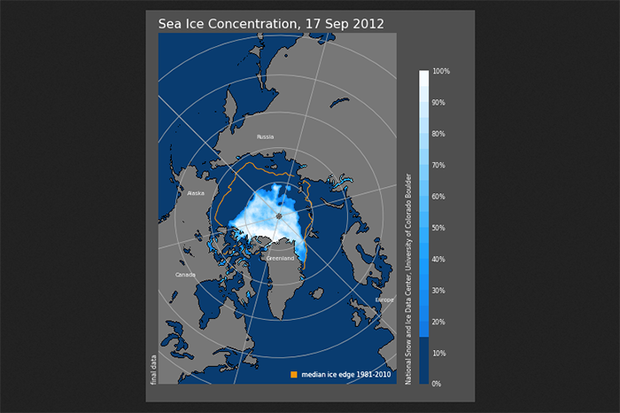Are winds a driving force for sea ice loss in the Arctic?

Arctic sea ice reached its lowest extent on record on September 17, 2012. Credit: National Snow and Ice Data Center
The rapid decline of Arctic sea ice, a trend visible for each month of the year over the last four decades, has become one of the clearest signals of a warming world. Most climate models predict this warming will lead to the first occurrence of ice-free summers in the Arctic sometime in the 2030s-2040s, in response to the rise of anthropogenic greenhouse gases in the atmosphere. However, the range of when an ice-free Arctic Ocean will likely occur and the rate of decline in sea ice cover is heavily influenced by variability of the climate system that is believed to be partially driven by natural sea surface temperature variability in the tropics and extratropics. Past studies, attempting to understand the extent of this contribution, have suggested that internal variability may have accounted for 30-50% of Arctic sea ice decline over the past 40 years through impacts on large-scale atmospheric and oceanic processes in and around the Arctic. However, it is unclear whether there exists an optimal internal mode that favors the strongest sea ice decline in the Arctic and the key mechanism through which this mode regulates sea ice variability.
In a new Journal of Climate article, MAPP and CVP-funded authors Ian Baxter and Qinghua Ding conduct a set of nudging simulations by specifying observed winds into a fully coupled model to assess the sensitivity of the sea ice response to different wind patterns.